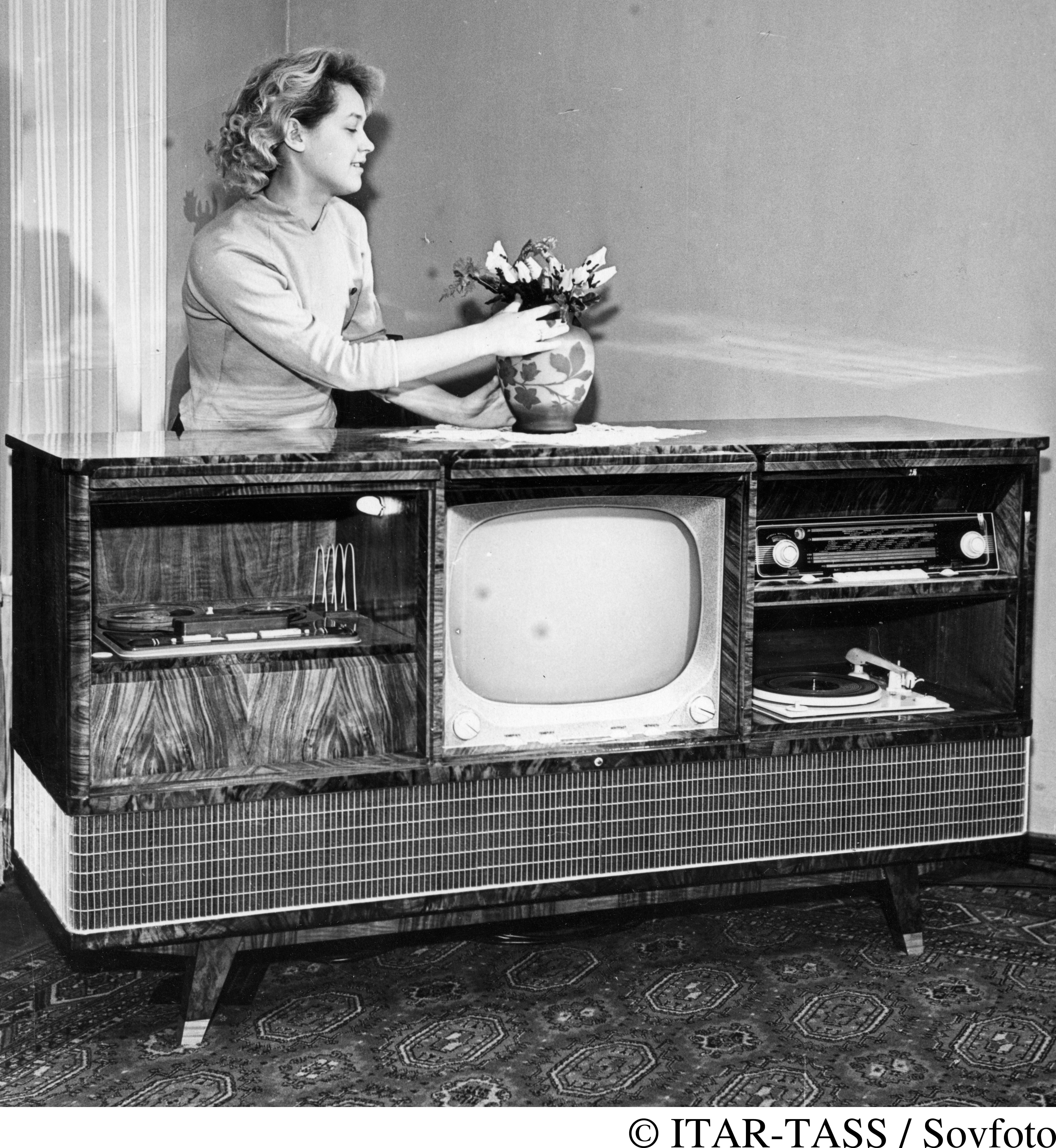Seeing History: The Soviet System and Consumer Goods
Printed Page 935
Important Events
Socialism, as described by Marx, envisioned a community with interests that were of a higher level than consumer items, all the while hoping for a higher standard of living for workers. The Soviet communist government, basing itself in theory on Marxist ideas, kept its citizens at a lower standard of living than that of citizens in western Europe and the United States. Resources needed to be channeled into industrialization and technology rather than into a luxurious way of life for ordinary people.
After Stalin’s death and the uprisings that followed, the Soviet government paid more attention to the conditions of everyday life. More consumer goods became available, including clothing, food, and domestic items such as radios and television, to which people became addicted. Radio and then television brought news, educational programming, and amusement. In the move toward a higher level of consumerism, Soviets distinguished their simplicity and lack of excess from the hyper-consumerism across western Europe and the United States—as this Soviet advertisement for a television in the early 1960s shows.
Questions to Consider
- Describe the ways in which widespread television viewership would help support Soviet rule.
- Describe the values expressed in this advertisement and the ways in which they might be called distinctly Soviet. If you do not believe this advertisement does not express distinctly Soviet values, describe the ways in which the Soviet and U.S. blocs are identical.